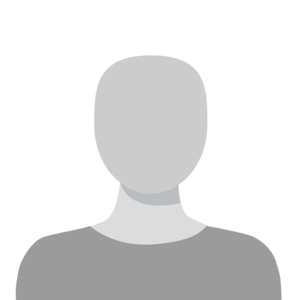
ACB Projects
In our scientific branch, we initiate and take lead in projects that apply artificial intelligence methods on large mouse phenotyping datasets. We use internal data from the German Mouse Clinic (GMC) as well as external data from the International Mouse Phenotyping Consortium (IMPC) and other sources.
In our scientific branch, we initiate and take lead in projects that apply artificial intelligence methods on large mouse phenotyping datasets. We use internal data from the German Mouse Clinic (GMC) as well as external data from the International Mouse Phenotyping Consortium (IMPC) and other sources.
EchoVisuAL
Active LearningApplied AIUncertaintySemantic SegmentationBayesian U-Net
Echocardiography is a fast and cost-effective imaging technique for assessing cardiac function and structure. Despite its popularity in cardiovascular medicine and recent advances in automated image processing, image-derived phenotypic evaluation is often performed manually. As this is time-consuming, highly operator dependent and challenging to reproduce, the application of artificial intelligence (AI) is needed.
Current AI approaches designed for automatic interpretation of rodent echocardiography data are trained on small and very different sets of annotated echocardiograms. Their ability to generalise to unseen data is therefore limited. We propose EchoVisuAL, an uncertainty-based active learning framework that uses a large-scale, multi-centre data set from the International Mouse Phenotyping Consortium (IMPC) including more than 105 000 echocardiograms from about 30 000 mice. The EchoVisuAL framework comprises a backend to manage the data and the active learning workflow. It also includes a trace segmentation and a model uncertainty estimation. Improvement of the models is facilitated by a web application that allows the annotation of training samples proposed by the models themselves.
In strong collaboration with the German Mouse Clinic (GMC) we are aiming to provide a more robust model capable of automatically analysing all existing murine echocardiograms. One way to achieve this is by expanding the training data and gradually improving the performance of the automated analysis. In summary, EchoVisuAL will set a more comprehensive and reproducible stage for AI-based interpretation of echocardiograms.
Analysis of Digital Histological Images: Uncovering Phenotypic insights with Deep Neural Networks
digital histopathologyimage analysiscontrastive learning
Digital histological images (DHIs) of mouse tissue hold significant potential for uncovering phenotypic insights. Using deep neural networks and in close collaboration with experts in the field from the German Mouse Clinic (GMC), this project aims to automate the analysis of large number of DHIs. All the DHIs are from single-gene knockout and wildtype mice generated at the GMC. This is a part of a high-throughput mouse phenotyping process, with an effort to study mouse models for human disease.
For in-depth learning from DHIs, we introduce a contrastive learning-based approach to detect morphological alterations in mouse tissues. The two-stage deep learning architecture first employs a supervised segmentation network to identify the tissue of interest from the DHI. A self-supervised network is then used to group together regions with similar features, eliminating the need for manual annotations. This approach enables the identification and extraction of morphological descriptors (features) in an automated fashion, even for subtle differences that may not be apparent to the naked eye. Furthermore, our pipeline aims to incorporate additional mouse phenotypic data generated in the different screening procedures at the GMC, to create a more robust feature representation.
Three use cases are foreseen to demonstrate the effectiveness of this approach. Firstly, we aim to explore pelvic dilation configuration in kidney tissue sections, investigating its association with renal clinical chemistry data. Secondly, we will examine white adipose tissue, seeking correlations with metabolic and clinical chemistry data. Lastly, we intend to determine the dimensions of the left ventricle of heart tissue sections and integrate heart weight data, aiming to uncover complementary morphological insights in cardiovascular phenotypic screening.
The development of our deep learning model for DHI analysis will enable researchers to efficiently and accurately assess a large number of images, identifying candidates for phenotypic changes. By gaining these valuable insights, our research facilitates the diagnostic assessment on a specific mouse model, thereby advancing our understating of disease.
From X-Rays to Insights: The AI Approach to Mouse Skeletal Analysis
bone segmentationbone morphometryskeletal phenotype
Our project, in collaboration with the German Mouse Clinic and the International Mouse Phenotyping Consortium (IMPC), focuses on the development of AI-based methods for quantitative analysis of high-resolution X-ray images of mice. These images are produced as part of the standard primary screening procedure and are taken when the mice are 14 weeks old.
The crux of our work is to extract meaningful features from these X-ray images that correspond to interpretable skeletal measurements. Ideally, these measurements would directly reflect bone lengths, providing a straightforward understanding of the data. However, we are also exploring surrogate measurements, such as the length of a segmentation mask - where the length isn't calculated based on the distance between two well-defined defined anatomical points.
As our main interest is in distinguishing differences between cohorts of mutant mice (from the same gene-knockout line) and wild types, these surrogate measures also prove to be suitable for our analysis.
Our methodology primarily revolves around segmentation-based techniques, that harness the power of Mask R-CNN. Furthermore, we're working on methods that pinpoint specific landmarks on the skeletal structure. We acknowledge the challenges associated with using 2D X-ray images, such as potential inaccuracies in length measurements due to perspective shortening or parallax errors when bones do not lie parallel to the image plane. Inconsistent subject poses add another layer of complexity to this challenge.
However, we are developing strategies to overcome these obstacles, for instance, by using multivariate regression. Our aim is to extract as much valuable information as possible from these images, and to make progess in the field of AI-based skeletal analysis.
The progress we hope to achieve with this project will make a significant contribution to the broader field of scientific research on mice, paving the way for a deeper understanding of their anatomy and genetic characteristics.







